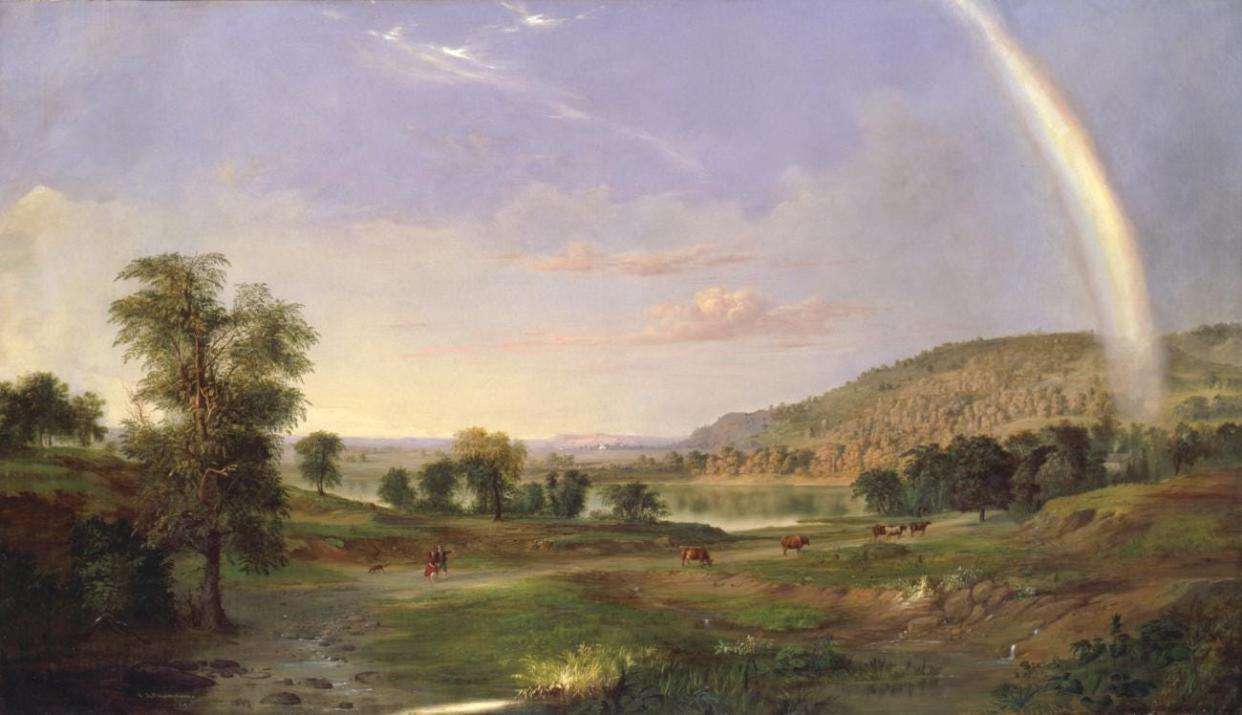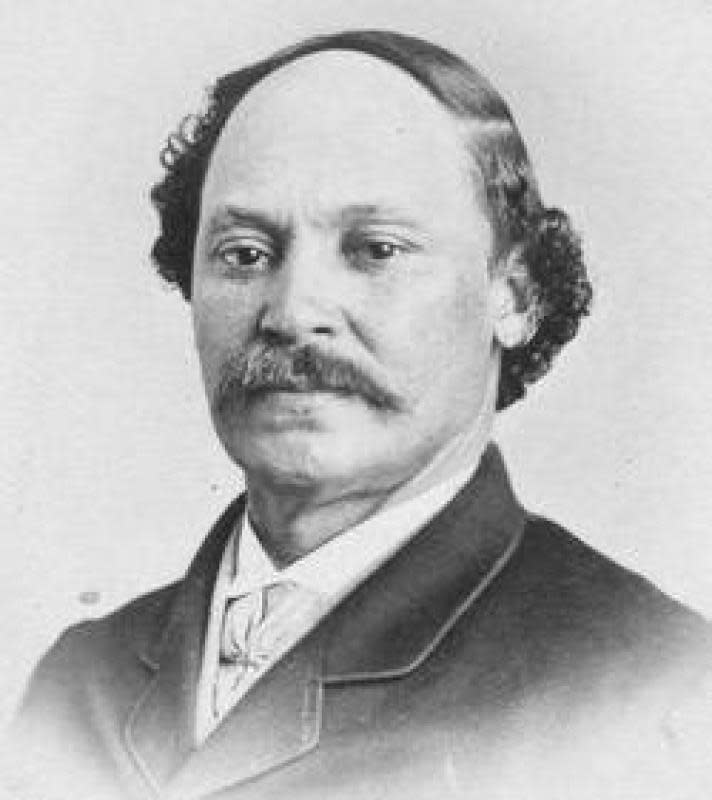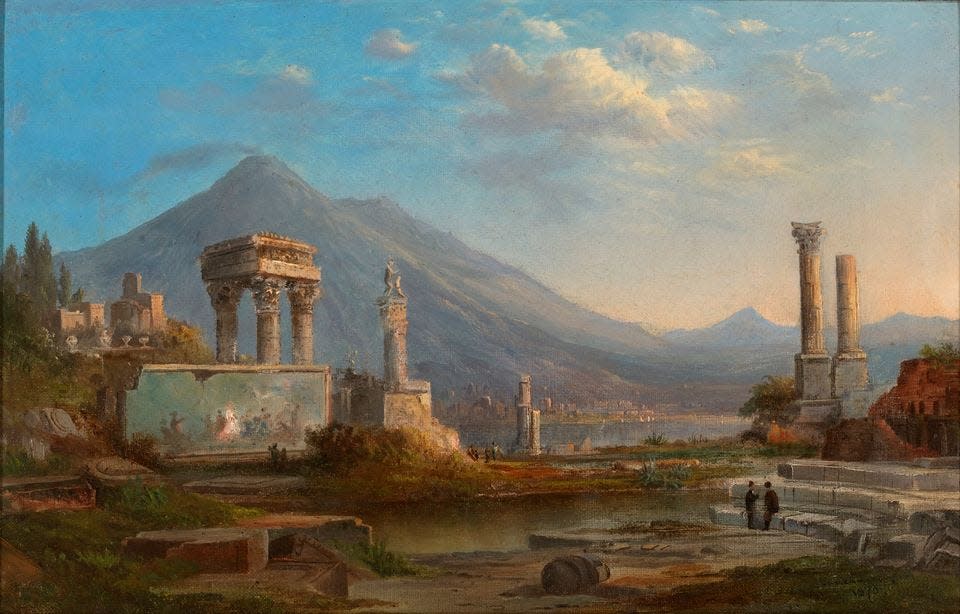Monroe County History: Famed landscape painter Robert Duncanson got start in Monroe

As an admirer, humble scribe, and continuing student of Monroe history, I’m always grateful to local historians who point out interesting facts and stories that lead me to further investigations and education.
I received my Monroe County Historical Society mailing the other day (and am proud to say I’m a card-carrying member of the organization which was started in 1938). In the mailing was included several nice brochures to distribute to others to encourage them to join. One of the entries referred to Robert Duncanson, the famous American landscape artist who nurtured his art as a young man in Monroe before venturing to pursue his love of landscape painting. His African-American roots next led him to Cincinnati – where he is recognized as a developer of the Ohio River Valley landscape tradition and the first African-American artist to be internationally recognized.

Born in Fayette, New York, Robert Duncanson came with his family to Monroe in 1828. Monroe was considered a boomtown by many at the time, and his father, John Dean, who was a free black tradesman, was seeking greater opportunity to provide for his growing family (he and his wife, Lucy Nickels, had five sons). The family originally lived freely in Virginia, but opportunities for free blacks and others were more favorable in the northern U.S., where manufacturing began to develop in earnest, bringing jobs and chances for entrepreneurs like John Dean Duncanson to practice his trade as a housepainter and carpenter. Robert Duncanson joined his father and brothers in apprenticeship, but Robert later moved to Cincinnati and began his career as a portrait painter.
At the time, portrait painters traveled to cities to work on projects. Thus, Robert Duncanson returned to Monroe and to Detroit frequently to complete work. During the 1840s, Robert Duncanson had three portraits – “Fancy Portrait,” “Infant Savior, a copy,” and “Miser.” A successful 1842 show at the Cincinnati Academy of Fine Arts caught the eye of the art world. It launched more portrait commissions for Robert Duncanson – most originating in Detroit. One of his major projects of the time was for the Berthelet family. While he earned a good living doing this, Robert Duncanson’s interest in landscaping art – particularly the works of Thomas Cole and the Hudson River School.

This led Robert Duncanson to begin work on what were known as travel prints – artwork to represent natural scenes that were described verbally in stories of all kinds. One of his first landscape works, “Cliff Mine, Lake Superior,” launched his career as a landscape artist. Many patrons who purchased his works were abolitionists promoting the abolishment of slavery in the U.S.
As his landscape artistry developed, Robert Duncanson joined fellow Cincinnati-area artists T. Worthington Whittredge and William Louis Sonntag to develop paintings featuring Ohio Valley-based landscapes. Thus, the Ohio Valley School was born – featuring romantic interpretations of local scenes in a literary tradition. He was approached by Nicholas Longworth (Ohio real estate mogul and winemaker) to create eight large landscape panels at his estate, Belmont.
Some art historians feel that many of Robert Duncanson’s paintings reflect both his free black status and his friendships with abolitionist patrons who both commissioned and purchased his works. For example, his “Uncle Tom and Little Eva” was painted in 1853 and shows a young slave (Tom) and the slave owner’s daughter (Eva) placed in an idyllic landscape looking upward toward Heaven. Some say this reflects author Harriet Beecher Stowe’s view of the theme of salvation from slavery through spiritual love and sacrifice.
Duncanson died on Dec.21, 1872 at age 51 due to dementia possibly induced by lead poisoning.
Tom Adamich is president of Visiting Librarian Service, a firm he has operated since 1993. He also is project archivist for the Greening Nursery Co. and Family Archives and the electric vehicle awareness coordinator at Monroe County Community College.
This article originally appeared on The Monroe News: History: Famed landscape painter Robert Duncanson got start in Monroe

